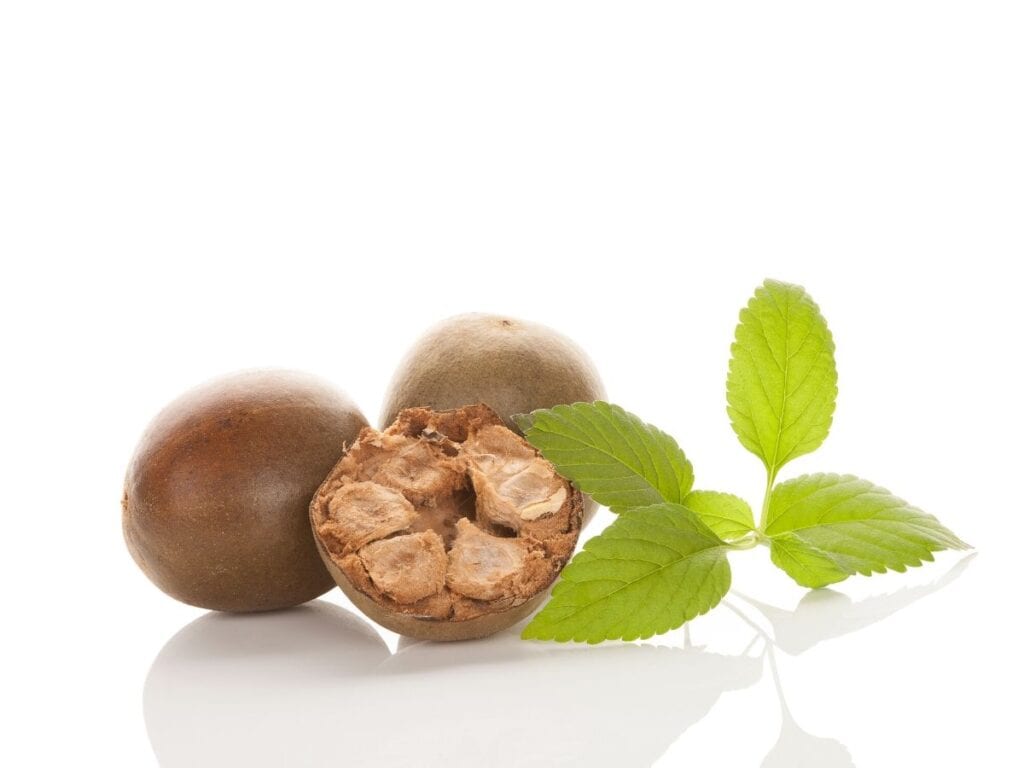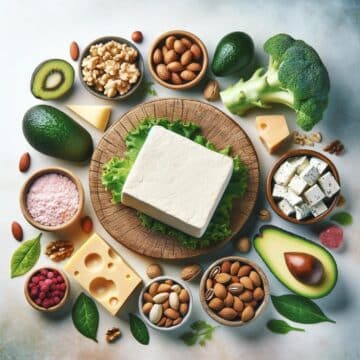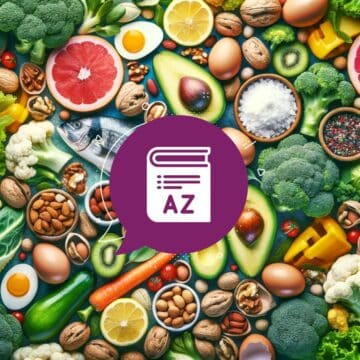Craving sweets on a keto diet? Reach for monk fruit extract. Unlike other sweeteners, monk fruit, extracted from a plant, offers enhanced sweetness, potentially surpassing Stevia in both taste and health benefits.
Is monk fruit keto-friendly? Yes. For those struggling with sugar restrictions on keto or low-carb diets, monk fruit provides an ideal alternative. It delivers sweetness without carbs or calories, supporting ketosis without dietary compromise. With a zero glycemic index, monk fruit doesn't impact blood sugar, making it perfect for maintaining a ketogenic lifestyle and managing sugar intake.
Exploring monk fruit's role in keto diets reveals its superiority over other sweeteners, ensuring indulgence without guilt. Ideal for keto desserts or as a daily sweetener, monk fruit stands out as the top choice for health-conscious sweetness.
Where Does Monk Fruit Come From?
Originating from the vineyards of Southeast Asia, specifically northern Thailand and southern China, monk fruit, or Siraitia grosvenorii (also known as luo han guo), thrives. This small, green melon-like fruit has a rich history dating back to the 13th century, cultivated first by Buddhist monks. Its name pays homage to these early cultivators. Traditionally, monk fruit was dried and ground for use in herbal medicines, but today, it's celebrated as a potent natural sweetener.
The process of creating monk fruit sweetener involves removing the skin and seeds, then crushing the fruit to extract its juice. This juice is dried and refined into the sweetener many seek out in health stores or online for its remarkable properties. So, why is monk fruit favored as a natural sweetener? Its appeal lies in the unique compounds it contains, making it more than 200 times sweeter than traditional sugar—minus the calories and carbs. This efficiency means only a small quantity is needed to sweeten your favorite keto foods and beverages, making it an ideal choice for maintaining a ketogenic lifestyle.
Benefits of Using Monk Fruit on the Ketogenic Diet
Embracing the keto diet often means confronting sugar cravings head-on. For many, sugar has been a staple energy source, making its reduction a challenge as the body seeks alternatives. Here, monk fruit emerges as a compelling substitute, offering the sweetness of sugar without its drawbacks, perfectly aligning with the principles of keto and low-carb diets.
Why choose monk fruit for your keto journey? Beyond its ability to satisfy sweet cravings without breaking ketosis, monk fruit is laden with potent antioxidants. These natural compounds are known for their ability to combat inflammation, fatigue, infections, and allergies, enhancing your overall well-being.
Monk fruit's antimicrobial properties further contribute to its appeal, with research suggesting its potential to slow harmful bacteria growth and combat fungal infections. Even more impressive, its antioxidants have shown promise in anti-cancer studies, notably inhibiting the growth of pancreatic cancer cells in lab settings.
Contrast this with the well-documented downsides of sugar consumption, which is linked to an array of health issues including heart disease, chronic inflammation, and Type 2 diabetes. The stark reality is the average American's intake of 22 teaspoons of sugar daily, equating to 88 grams of health-compromising carbs.
While moderation is key, as consuming 22 teaspoons of any sweetener, including monk fruit, is not advisable, its low-carb profile makes it an invaluable ally in the keto diet. Monk fruit doesn't just replace sugar; it offers a pathway to maintaining a healthier, low-carb lifestyle without sacrificing the joy of sweetness.
How Does Monk Fruit Compare to Other Sweeteners?
Monk fruit has received a lot of attention in the low-carb world lately. However, it is not the only sweetener available. There are several popular natural and artificial sweeteners, including:
- Stevia
- Splenda
- Maple syrup
- Honey
- Agave
- Xylitol
- Erythritol
Related: Keto Sweeteners for Baking
Stevia is the most direct alternative to monk fruit. It is also extracted from a plant and includes compounds that are much sweeter than sugar.
Both stevia and monk fruit contains zero calories and about half a gram of carbohydrates per teaspoon. Unfortunately, Stevia has been linked to several side effects, including gas and bloating. Monk fruit is not known to produce the same gastrointestinal discomfort.
Splenda is one of the most used artificial sweeteners. It is a sucralose-based sweetener. Sucralose is an ingredient that cannot be digested. It may also increase the risk of liver inflammation and damage the microbiome in your gut.
Maple syrup, honey, and agave are commonly used as natural sweeteners. Compared to Splenda and artificial sweeteners, these options are healthier. They carry no risk of side effects and include beneficial minerals.
The drawback to these natural sweeteners is their carb count. One teaspoon of honey contains six grams of carbs while maple syrup and agave may contain four or five grams.
You’re getting the same amount of carbs as using real sugar.
If you want to stick to the ketogenic diet and need a sweetener, monk fruit is likely your best option. It only contains about half a gram of carbs per teaspoon and offers many potential health benefits.
When Should You Use Monk Fruit on the Keto Diet?
Keto desserts, obviously!
Monk fruit extract, boasting a minimal 0.4 to 0.5 grams of carbs per teaspoon, aligns with keto guidelines when used judiciously. A teaspoon or two with your meals or in beverages can sweeten without disrupting ketosis. Yet, mindful consumption is essential—as the carbs can add up with increased use throughout the day.
Monk fruit shines in keto baking, offering a perfect sweetening solution for recipes using keto-friendly flours like coconut or almond. It's particularly effective in keto desserts, where it balances flavors without adding unwanted carbs. While savory dishes rarely call for sweeteners, monk fruit's role in enhancing keto desserts cannot be overstated—a teaspoon can transform a dish, adding just the right touch of sweetness.
Last Thoughts on Using Monk Fruit for Keto
Eliminating carbs doesn't mean sacrificing sweetness, thanks to substitutes like monk fruit. As a keto-compliant ingredient, it stands out for its health benefits and flavor-enhancing properties, making it an excellent addition to your keto culinary arsenal. Whether you're experimenting with new keto dessert recipes or seeking to enrich your diet with healthy, flavorful options, monk fruit is an invaluable resource. Embrace it in your keto journey and discover the diverse ways it can elevate your meals. Visit our keto recipes section for inspiration and start exploring the delightful possibilities monk fruit offers. It's a choice you'll cherish in your pursuit of a balanced, low-carb lifestyle.








Leslie says
I'm trying to confirm how many net carbs are in Monkfruit such as Lakanto. The discussion above notes .5g per tsp.; however, the package notes 4g of net carbs per teaspoon! Is this correct?
Tisa says
hi, Leslie.
As far as I can see, the Lakanto monk fruit-erythritol blend has 4g of sugar alcohol per teaspoon because of the main ingredient erythritol (4g is also is the total weight of 1t sweetener) - which means zero net carbs.
As for the possible tiny amount of carbs in one tsp discussed above, you can just ignore that. That's because we're talking about pure extract that you can only consume in dashes.
Geri says
Is there a difference in the making of granulated monk fruit sugar and confectioners monk fruit sugars? Or can we just powder up the granulated sugar in my coffee grinder?
Tisa says
Hi, Geri! That is what I usually do: Take the granulated sweetener (usually an erythritol-monk fruit blend) and powder it in a grinder. So go ahead, freely!
All the best!
Judith Major says
Agave is not healthy at all damaging the liver.
Debbie Nuss says
Will 3 g. From monk fruit kick me out of Ketosis? My holistic Dr. Put me on something that has it in there.
My Sweet Keto says
I honestly believe monk fruit should not kick you out of ketosis.
Tammi says
This is great info, thank you! Can you give me a link to purchase monk fruit that is not mixed with anything else? I can only find it mixed with dextrose or erythritol. Thanks!
My Sweet Keto says
Hi, Tammi. Unfortunately, I cannot help you yet. When something like that is available, I'll keep you all posted!
EDIT: This is what I just found. But I still have to try it.